

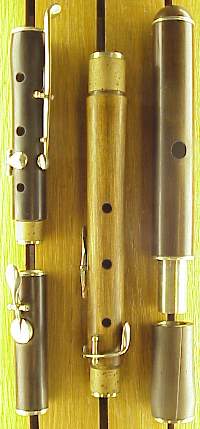 |
Strings and woodwinds were added in 1855, two years later including the flutemaking concern of Jean-Louis Tulou, a well known flutist and life-long advocate of the traditional conical flute who was also a member of the Paris Conservatoire and their official supplier of flutes from 1831-59. |
| The firm's name became
'Gautrot
aîné et cie' in 1870, changed to 'Couesnon, Gautrot et
cie'
in 1883, and then to 'Couesnon et cie' in 1888. In 1875 the trade
names 'Gautrot-Marquet' and 'Gautrot aîné' were
registered,
the former designating their highest quality instruments. It is
uncertain
how long these marks were used or if they survived the firm's
subsequent
name changes.
On the right above the 'GAUTROT AINE/A PARIS' is the monogram, "G" (anchor) "A" within an oval cartouche. |
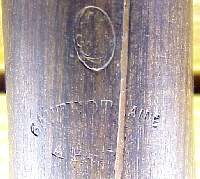 |
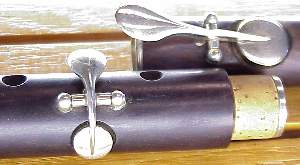 |
The standard round post-and-rod keys are of nickel silver and use leaf springs held in place by set screws. For the shorter keys, holes were drilled completely through the finger touches, threads tapped, the screws inserted and the protruding screw end filed flush with they key top (visible on upper key touch at right). | 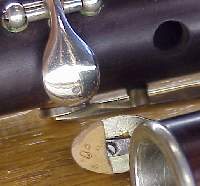 |
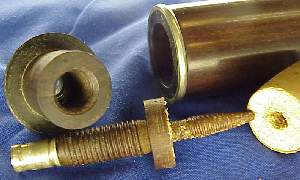 |
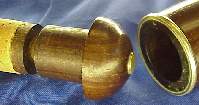 The
dome crown is female threaded to mate with the wooden screw cork
adjuster
and perforated for the metal pin cork position indicator. Just exactly
what that setting is supposed to be, I haven't a clue, so I resort to
the
"trial by error" method. The
dome crown is female threaded to mate with the wooden screw cork
adjuster
and perforated for the metal pin cork position indicator. Just exactly
what that setting is supposed to be, I haven't a clue, so I resort to
the
"trial by error" method.
So much for sticking with Boehm and Boehm variant flutes. In my defense, this flute was given to me by Steve Cole, who acquired it from an estate in New South Wales. It has opened up a new appreciation for the conical flute and the "simple system's" requisite finger calisthenics! |
Information on Gautrot was supplied in part by
George A. Conrey's The
Sarrusophone - An Update, Part Two article in The Journal of
the
International Double Reed Society No. 17, 1989. And of course
the William Waterhouse New Langwill Index continues to be an
invaluable
resource.
GoferJoe's
Flutes
GoferJoe's Personal Page
GoferJoe's
Arts Burrow
Images © J.
W. Sallenger